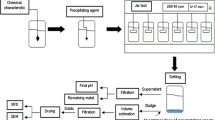Abstract
Drilling fluid has many functions, such as carry cuttings from the hole permitting their separation at the surface, cool and clean the bit, reduce friction between the drill pipe and wellbore, maintain the stability of the wellbore, and prevent the inflow of fluids from the wellbore and form a thin, low-permeable filter cake. Filter cake removal is an important step concerning both production and injection in wells, mainly concerning horizontal completion. The drilling fluids are typically comprised of starch, the most important component of the filter cake. A common approach to remove this filter cake is the use of acid solutions. However, these are non-specific reactants. A possible alternative is the use of enzymatic preparations, like amylases, that are able to hydrolyze starch. Wells usually operate in drastic conditions for enzymatic preparations, such as high temperature, high salt concentration, and high pressure. Thus, the main objective of this work was to characterize four enzymatic preparations for filter cake removal under open hole conditions. The results showed that high salt concentrations (204,000 ppm NaCl) in completion fluid decreased amylolytic activity. All enzymatic preparations were able to catalyze starch hydrolysis at all temperatures tested (30, 65, 80, and 95 °C). An increase of amylolytic activity was observed with the increase of pressure (100, 500 and 1,000 psi) for one commercial amylase.






Similar content being viewed by others
References
Caenn, R., & Chillingar, G. V. (1996). Journal of Petroleum Science & Engineering, 14, 221–230.
Queiroz, J. (2002). In: Intern. Symp. Exhibition on formation damage control, Lafayette, USA, SPE 73713.
Battistel, E., Bianchi, D., Fornaroli, M., Guglielmetti, G., Europa, P. & Cobianco, S. (2005). In: European Formation Damage Conference, Sheveningen, The Netherlands, SPE 94702.
Beall, B. B., Brannon, H. D., TjonJoePin, R. M., & O’Driscoll, K. (1996). In: SPE Annual Technical Conference & Exhibition, Denver, USA, SPE 36429.
Kameda, E., Queiroz, J. C., Langone, M. A. P., & Coelho, M. A. Z. (2007). Journal of Petroleum Science & Engineering, 59, 263–270.
Hansen, J. E., & Jiang, P. (1999). In: SPE International Symposium on Oilfield Chemistry, Houston, Texas, SPE 50709.
Gupta, R., Gigras, P., Mohapatra, H., Goswami, V. K., & Chauhan, B. (2003). Process Biochemistry, 38, 1599–1616.
Sarubbo, L. A., Luna, J. M., & Campos-Takashi, G. M. (2006). Electronic Journal of Biotechnology, 9, 400.
Cooper, D. G., & Goldenberg, B. G. (1987). Applied and Environmental Microbiology, 53, 224.
Toledo, A. L., Severo, J. B., Jr., Souza, R. R., Campos, E. S., Santana, J. C. C., & Tambourgi, E. B. (2007). Journal of Chromatography B, 846, 51–56.
Lowry, O. H., Rosebrough, N. J., Farr, A. L., & Randall, R. J. (1951). Journal of Biological Chemistry, 193, 265–275.
Miller, G. L. (1959). Analytical Chemistry, 31, 426–428.
Li, H., Chi, Z., Wang, X., Duan, X., Ma, L., & Gao, L. (2007). Enzyme and Microbial Technology, 40, 1006–1012.
Ezeiji, T. C., & Bahl, H. (2006). Journal of Biotechnology, 125, 27–38.
Asghaer, M., Asad, M. J., Rahman, S. U., & Legge, R. L. (2007). Journal of Food Engineering, 79, 950–955.
Lopez, C., Torrado, A., Fuciños, P., Guerra, N. P., & Pastrana, L. (2006). Enzyme and Microbial Technology, 39, 252–258.
Aguilar, G., Morlon-Guyot, J., Trejo-Aguilar, B., & Guyot, J. P. (2000). Enzyme and Microbial Technology, 27, 406–413.
Boonyaratanakornkit, B. B., Park, C. B., & Clark, D. S. (2002). Biochimica et Biophysica Acta, 1595, 235–249.
Fukuda, M., & Kunugi, S. (1984). European Journal of Biochemistry, 142, 565–570.
Acknowledgments
The authors gratefully acknowledge the financial support given by CNPq, FAPERJ, FINEP, CAPES as well as the collaboration with CENPES/Petrobras.
Author information
Authors and Affiliations
Corresponding author
Rights and permissions
About this article
Cite this article
Kyaw, N., de Mesquita, R.F., Kameda, E. et al. Characterization of Commercial Amylases for the Removal of Filter Cake on Petroleum Wells. Appl Biochem Biotechnol 161, 171–180 (2010). https://doi.org/10.1007/s12010-009-8773-y
Received:
Accepted:
Published:
Issue Date:
DOI: https://doi.org/10.1007/s12010-009-8773-y




